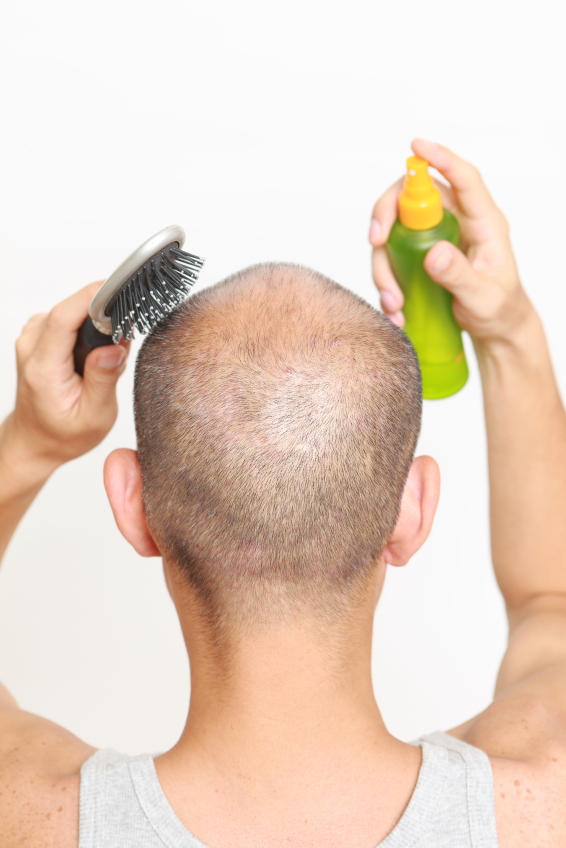Is is inevitable for most men to gradually bald in middle and older age? Not necessarily.
Male pattern baldness can begin as early as 20 and most men are genetically predisposed to some degree of baldness. Following puberty, the enzyme DHT (dihydrotestosterone) slows down hair growth as well as making hair weaker and shorter. Male pattern baldness commonly starts as a receding hairline beginning at the temples or thinning on the crown of the head. It is estimated that nearly half of all white men will have some baldness by the age of 50
We have traditionally thought that male baldness follows the mother’s father but new research indicates that boys follow their father’s father or some mix of both sides of the family. By seeing a specialist such as a dermatologist or a trichologist, the root cause of the hair loss can be determined. Besides heredity and hormones, stress, diet and medications can have an effect on hair growth.
Treatment
In the past 20 years, significant progress has been made in developing drugs that can help treat male pattern baldness. Finasteride, marketed as Propecia, can slow the progression of hair loss by inhibiting the enzyme responsible for male hair loss. However, there are some serious side effects, including loss of libido, sexual function and an increased risk for prostate cancer.
Minoxidil, a key ingredient in the topical hair loss treatment Rogaine, has been found to slow hair loss and regrow some hair however it does not affect the hormonal cause of balding and may only provide marginal success. Side effects can include scalp irritation, unwanted hair growth on skin near scalp and rapid heart rate (tachycardia).
Non-surgical hair replacement or hairpieces have come a long way since your great-uncle’s bad rug. The best prosthesis are made from human hair carefully matched to the client’s own natural hair, however attaching the hair to the scalp with an adhesive can be unhealthy for the head because it interferes with proper hygiene and can cause hair loss to accelerate.
Hair restoration, or hair transplants, are a more permanent option but can be very costly and come with a number of potential side effects including scarring, infection, poor positioning or unnatural appearance. If you are considering this treatment, make sure you see several before and after photos, ask for half a dozen references and check to confirm the doctor is board certified.
Laser treatment for hair loss has been cleared by the FDA but further study is needed to determine the long-term effects of the treatment. Studies have found that subjects reported an improvement in hair loss and thickness without side effects following treatment.
Of course, many men confidently shun all of these treatment options and embrace their baldness by shaving their heads and donning a baseball cap under the sun. Not everyone can rock the bald head but when you consider some of the side-effects, it might seem like the most reasonable alternative. And men can always experiment with growing more facial hair to compensate. But please guys….no comb-overs!
To learn more about male pattern baldness visit the U.S. National Library of Medicine at: https://www.nlm.nih.gov/medlineplus/ency/article/001177.htm .






Add Your Voice
0 Comments
Join the Discussion